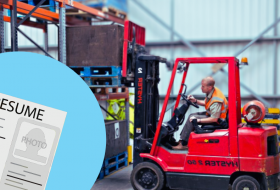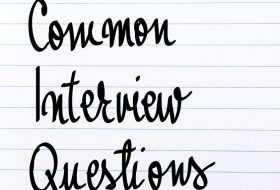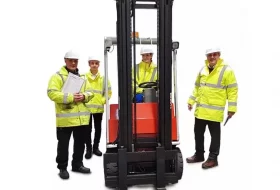Obtaining a forklift operator’s license is a crucial step towards a rewarding career in logistics and warehouse management. Whether you are a beginner looking to start your journey in the industry or an experienced forklift driver aiming to renew your certification, acing the forklift driving test is essential. This article will provide you with valuable insights, tips, and a forklift practical test checklist to help you succeed on your forklift driving test. Let us dive in and ensure you are well-prepared for this important challenge.
Understanding the Forklift Driving Test
Before we delve into the specifics of how to ace your forklift driving test, it is important to understand what the test entails. The forklift driving test is designed to evaluate your knowledge of safe forklift operation and your practical skills in operating a forklift. The test typically consists of two parts:
Written Test:
This portion assesses your theoretical knowledge of forklift safety rules, regulations, and operating procedures. You will need to answer questions related to forklift types, load handling, hazard awareness, and emergency procedures. Preparing for this part requires studying forklift operator manuals, safety guidelines, and practicing with forklift driving test questions and answers.
Practical Test:
The practical test evaluates your hands-on forklift operation skills. You will be required to demonstrate your ability to safely maneuver a forklift in various scenarios, such as lifting and placing loads, navigating tight spaces, and following proper safety protocols. This part is often conducted in a controlled environment, like a training facility or warehouse.
Now, let us explore how you can effectively prepare for both the written and practical components of the forklift driving test.
Preparing for the Written Test
Study the Operator’s Manual:
Begin your preparation by thoroughly reading the forklift operator’s manual provided by your training program or the relevant regulatory authority. Pay close attention to sections covering safety guidelines, load capacity, and emergency procedures. Make notes and highlight key points to aid in your revision.
Use Forklift Practice Tests:
To get a feel for the types of questions that may appear on the written test, take advantage of forklift practice tests. These practice tests often include questions and answers related to forklift operation, safety, and regulations. Completing these tests will help you gauge your knowledge and identify areas where you need improvement.
Seek Guidance:
Don’t hesitate to ask your instructor or experienced forklift operators for guidance. They can provide valuable insights into the test format and share their personal experiences, which can be immensely helpful in your preparation.
Memorize Key Terminology:
Familiarize yourself with essential forklift terminology, such as “counterbalance forklift,” “center of gravity,” “mast,” and “load backrest.” Understanding and using the correct terminology not only helps with the written test but also demonstrates your knowledge during the practical test.
Practice Safety Procedures:
Safety is paramount when operating a forklift. Make sure you understand safety procedures for approaching ramps, uneven surfaces, pedestrian traffic, and other potential hazards. The written test often includes questions related to safety protocols, so being well-versed in this area is crucial.
Preparing for the Practical Test
Forklift Practical Test Checklist:
To succeed in the practical test, you must be well-prepared and confident in your skills. Here is a comprehensive forklift practical test checklist to ensure you are ready for the challenge:
Vehicle Inspection:
Before starting the forklift, conduct a thorough pre-operation inspection, checking for any defects or malfunctions. – Ensure the forklift’s brakes, steering, lights, horn, and safety devices are in working order. – Verify that the load backrest is securely in place.
Safety Gear:
Wear the required personal protective equipment (PPE), including a hard hat, high-visibility vest, steel-toed boots, and gloves.
Load Handling:
Practice proper load handling techniques, including how to pick up, carry, and place loads. – Pay close attention to load stability, and make sure it is distributed evenly on the forks. – Use the correct attachment for the load, such as pallet forks or a clamp.
Maneuvering:
Practice maneuvering the forklift in tight spaces, including turns, reverse movements, and pivots. – Be aware of your surroundings and use mirrors to check blind spots.
Pedestrian Awareness:
Always be vigilant for pedestrians and other workers in the area. – Use the forklift’s horn to alert others of your presence when necessary.
Following Instructions:
Listen carefully to the instructions provided by the examiner. Follow hand signals if the examiner is directing you during the test.
Emergency Procedures:
Know how to respond to emergency situations, such as equipment malfunction or a sudden load shift. – Demonstrate your ability to safely park and secure the forklift in case of an emergency.
Controlled Movements:
Show precise control over the forklift’s movements, especially during delicate operations like stacking or unstacking.
Practice, Practice, Practice:
To ace the practical test, practice is essential. Spend ample time operating a forklift in various scenarios to build your confidence and skills. Seek out a qualified instructor or training program to provide guidance and supervision during your practice sessions.
Mock Practical Tests:
Consider taking mock practical tests to simulate the actual testing conditions. These mock tests can be conducted by your training program or instructor and will help you become familiar with the testing environment and expectations.
Stay Calm and Focused:
On the day of the practical test, stay calm and focused. Remember the safety procedures and operational techniques you have practiced. Avoid rushing through the test; take your time to demonstrate your skills accurately and safely.
Practice Load Calculation:
Understand how to calculate the weight of the load you are lifting. This knowledge is invaluable when it comes to load handling and maintaining forklift stability. You may be asked questions about load calculations on the written test.
Master Reverse Driving:
The ability to operate the forklift smoothly in reverse is crucial, especially when navigating tight spaces. Practice reverse driving to ensure you can perform this maneuver confidently.
Learn the Hand Signals:
In some cases, you may need to communicate with colleagues using hand signals while operating a forklift. Familiarize yourself with common hand signals used in warehouses and workplaces.
Stay Updated with Regulations:
Forklift regulations may change over time, so it is essential to stay updated with the latest safety standards and guidelines. This knowledge will not only help you during the test but also ensure you are always in compliance with industry regulations.
Review the Testing Environment:
If possible, visit the testing location before the actual test. Familiarity with the testing area can reduce test-day anxiety and help you plan your movements better.
Acing your forklift driving test is not only a prerequisite for obtaining your forklift operator’s license but also a testament to your commitment to safety and excellence in the workplace. By thoroughly preparing for both the written and practical components of the test, you increase your chances of success. Utilize the forklift practical test checklist provided in this article, study diligently, practice consistently, and seek guidance from experienced forklift operators and instructors. With dedication and a focus on safety, you will be well on your way to acing your forklift driving test and pursuing a successful career in the world of logistics and warehousing.







